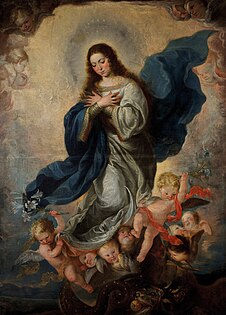|
Mateo Cerezo  Mateo Cerezo, sometimes referred to as The Younger (19 April 1637, Burgos – 29 June 1666, Madrid) was a Spanish Baroque painter; known primarily for religious works and still-lifes. Life and worksHis father was the painter, Mateo Cerezo Muñoz (c.1610-1670, sometimes referred to as The Elder), and Isabel Delgado, the daughter of a well-known goldsmith.[1] After receiving his initial training from his father, he went to Madrid, where he studied with Juan Carreño de Miranda, becoming one his most promising students. He was also employed in Carreño's workshops. His style was influenced by Antonio de Pereda, Carreño and Bartolomé Esteban Murillo.[2] He also appears to have been familiar with Titian, Veronese and Correggio, whose works he could have seen in the Royal collections. He was active in Burgos, Valladolid and Valencia, as well as Madrid. His works ranged from altarpieces to small devotional paintings. His final work was a "Last Supper" for the refectory of the Order of Augustinian Recollects, which is known only from a print by José del Castillo, made in 1778. It was looted during the Peninsular War, and passed through several hands before disappearing during the Spanish Civil War.[1] He was married in 1664, and died two years later, as the result of an unspecified serious illness. Despite his early death, he left a relatively large body of works; many of which may be seen at the Museo del Prado. Selected works
Gallery
References
Further reading
External links
|
Portal di Ensiklopedia Dunia


